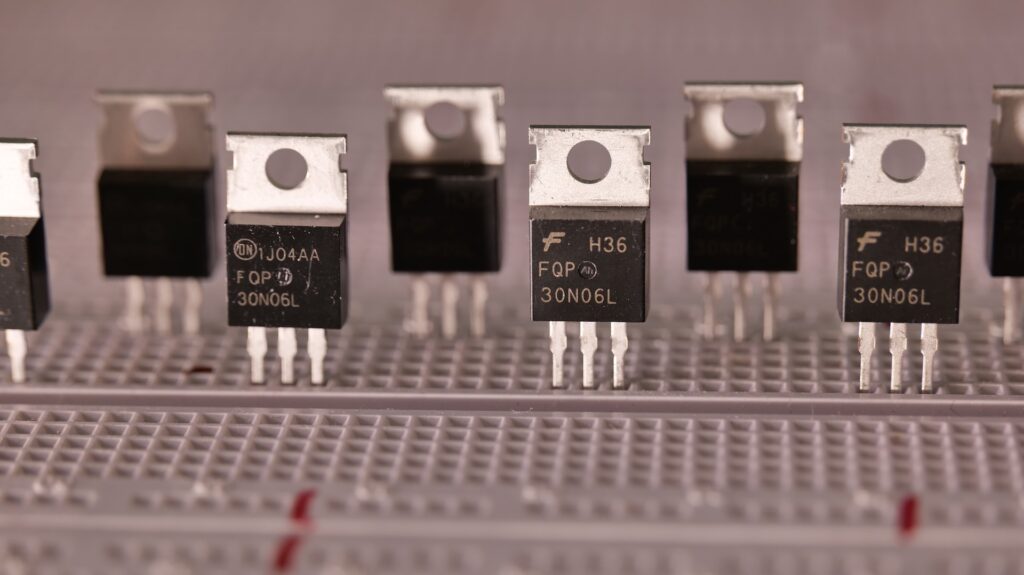Introduction: In the world of electronics, MOSFET (Metal-Oxide-Semiconductor Field-Effect Transistor) stands as a crucial component used in a wide range of applications. Its unique characteristics make it a popular choice in various electronic devices, from laptops and smartphones to power amplifiers and voltage regulators. In this article, we will delve into the intricacies of MOSFET characteristics, exploring its working principles, applications, and how it differs from other transistors.
What is a MOSFET characteristics?
At its core, a MOSFET is a type of field-effect transistor that operates based on the electric field created by the charge present in the oxide-insulated gate terminal. It consists of three terminals: the gate (G), the source (S), and the drain (D). The flow of current between the source and the drain is controlled by the voltage applied to the gate.
MOSFET Structure
Construction
A MOSFET comprises a semiconductor channel, typically made of silicon, with two heavily doped regions on either side, known as the source and drain. The gate terminal lies above the channel, separated by a thin insulating layer, usually made of silicon dioxide (SiO2).
Types of MOSFET
There are mainly two types of MOSFETs: N-channel and P-channel. In N-channel MOSFETs, electrons constitute the charge carriers, while in P-channel MOSFETs, holes are the charge carriers. The choice of the MOSFET type depends on the application requirements.
MOSFET Characteristics
Threshold Voltage (V<sub>TH</sub>)
The threshold voltage represents the minimum voltage that must be applied to the gate terminal to create a conducting channel between the source and the drain. Below this voltage, the MOSFET remains in a non-conductive state.
On-State Resistance (R<sub>DS(ON)</sub>)
On-state resistance is the resistance offered by the conducting channel between the source and the drain when the MOSFET is fully turned on. Lower on-state resistance results in reduced power dissipation and improved efficiency.
Drain-Source Breakdown Voltage (BV<sub>DSS</sub>)
BV<sub>DSS</sub> is the maximum voltage that can be applied between the drain and the source while keeping the gate-source voltage (V<sub>GS</sub>) at zero, without causing any permanent damage to the MOSFET.
Gate Capacitance (C<sub>ISS</sub>, C<sub>OSS</sub>, C<sub>RSS</sub>)
Gate capacitance includes three components: C<sub>ISS</sub> (input capacitance), C<sub>OSS</sub> (output capacitance), and C<sub>RSS</sub> (reverse transfer capacitance). These capacitances play a significant role in determining switching times and overall performance.
Transconductance (g<sub>fs</sub>)
Transconductance refers to the change in drain current concerning the change in gate-source voltage. It is a critical parameter in designing amplifiers and other signal processing circuits.
MOSFET Applications
Switching Applications
MOSFETs are widely used in switching applications, where they act as electronic switches to control the flow of current in various circuits.
Amplification Applications
Due to their high input impedance and low output impedance, MOSFETs find extensive use in amplification circuits, such as audio amplifiers.
Voltage Regulation
MOSFETs are employed in voltage regulation circuits to maintain a stable output voltage, making them essential in power supplies.
RF Applications
In radio frequency circuits, MOSFETs serve as key components for signal amplification and mixing.
MOSFET vs. BJT (Bipolar Junction Transistor)
Comparing MOSFETs to BJTs, MOSFETs have higher input impedance, making them suitable for high-frequency applications. Additionally, they have lower power dissipation, making them more efficient in power management.
Conclusion:
In conclusion, MOSFETs play a crucial role in modern electronics, catering to a broad spectrum of applications due to their unique characteristics. Understanding the key aspects, such as threshold voltage, on-state resistance, and transconductance, helps engineers and designers make informed choices while incorporating MOSFETs in their circuits.
FAQs
Q1: Can MOSFETs handle high voltages?
Yes, MOSFETs can handle high voltages, but the maximum voltage rating depends on the specific MOSFET model and its design.
Q2: What is the difference between an N-channel and P-channel MOSFET?
The main difference lies in the type of charge carriers they use for conduction. N-channel MOSFETs use electrons, while P-channel MOSFETs use holes.
Q3: Are MOSFETs more efficient than BJTs?
Yes, MOSFETs are generally more efficient than BJTs due to their lower power dissipation and higher input impedance.
Q4: Can I use a MOSFET as a voltage regulator?
Yes, MOSFETs are commonly used as voltage regulators, especially in applications where high efficiency is required.
Q5: What is the importance of gate capacitance in MOSFETs?
Gate capacitance affects the switching speed of MOSFETs, making it a critical parameter for high-frequency applications.
Remember, when working with mosfet characteristics, always refer to the datasheet and consider the specific requirements of your circuit to make the most out of this versatile electronic component.

